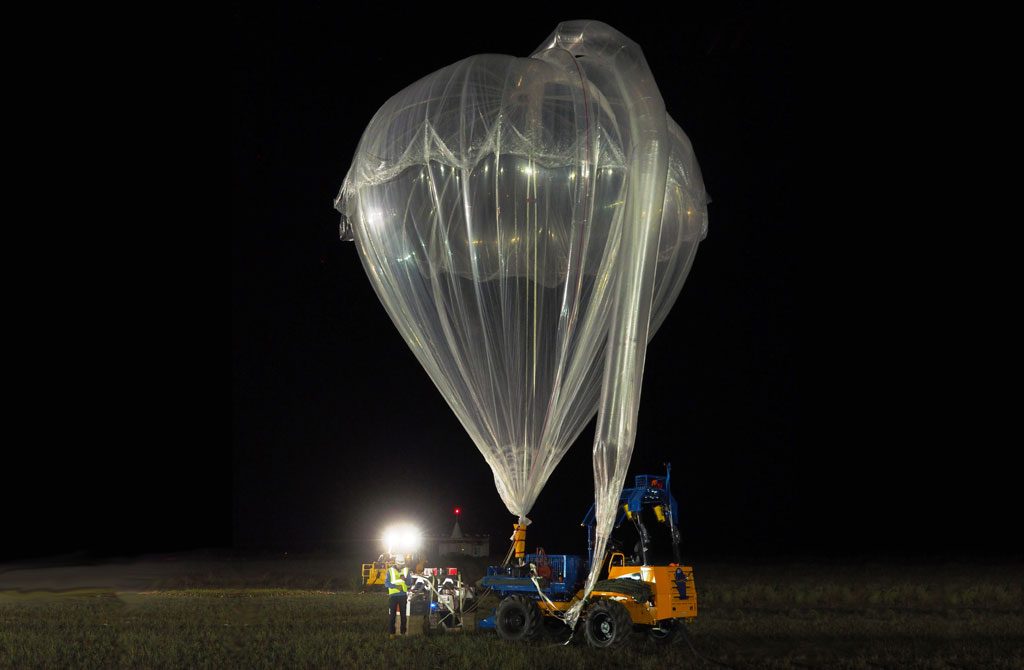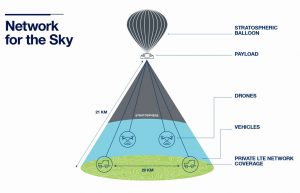
Airbus successfully tests stratospheric 4G/5G defence communications with balloon demonstration
Paris, 25 September 2018 – Airbus has successfully tested stratospheric 4G/5G defence applications with a high-altitude balloon demonstration. The technology tested, an Airbus LTE AirNode, represents a key part of Airbus’ secure networked airborne military communications project, Network for the Sky (NFTS). With this new generation of long-range communications in the sky, high-altitude platforms such as Airbus’ Zephyr will be able to create persistent, secured communication cells to relay information on a variety of different aircraft platforms including helicopters, tactical UAVs and MALE UAVs (Medium Altitude Long Endurance Unmanned Aerial Vehicles).
With the support of French and Canadian space agencies, Airbus flew and tested the communications solution in Canada at all altitudes up to 21km above the Earth’s surface, using a stratospheric balloon to create a high-altitude airborne cell site. In its payload, the balloon carried an Airbus LTE AirNode, which provided a 30km-wide footprint of coverage for private and secure communications. The Airbus team, equipped with two vehicles and two drones, tracked the balloon over 200km, exchanging 4K video between the different assets – simulating an ISR mission with real-time transmission. The data was sent via a private network at speeds from 0.5 to 4 Mbps, which is comparable to 4G/5G mobile communication.
Pushing the boundaries in delivering easily deployable communications, this capability will significantly increase operational flexibility during air missions. An LTE AirNode allows opportunistic, secure communications between different aircraft as they fly within range of each other, where operations require permanent and powerful connectivity. It will deliver highly secure communications for airborne assets, ground or maritime-based operations for several weeks or months at a time – combining the persistence of a satellite with the flexibility of a UAV. This type of ad-hoc network can be adaptable to all users – from special forces to disaster relief scenarios.
Airbus unveiled its NFTS solution at the Farnborough International Airshow 2018. It combines different communication technologies to form one resilient global mesh network, allowing aircraft to be a fully integrated part of a high-speed connected battle space.
Today, individual aircraft, UAVs and helicopters continue to operate on separate networks with limited bandwidth and interoperability, and often little resilience. NFTS will integrate various technologies, such as satellite links with geostationary, medium and low Earth orbit constellations, tactical air-to-ground, ground-to-air and air-to-air links, voice links, 5G mobile communication cells and laser connections, into a single global secure network.
Network for the Sky is the foundation for the connected airborne battlespace, with the objective to offer a full operational capability by 2020. The NFTS programme is part of Airbus’ Future Air Power project and is fully aligned with the development of the European Future Combat Air System (FCAS).

